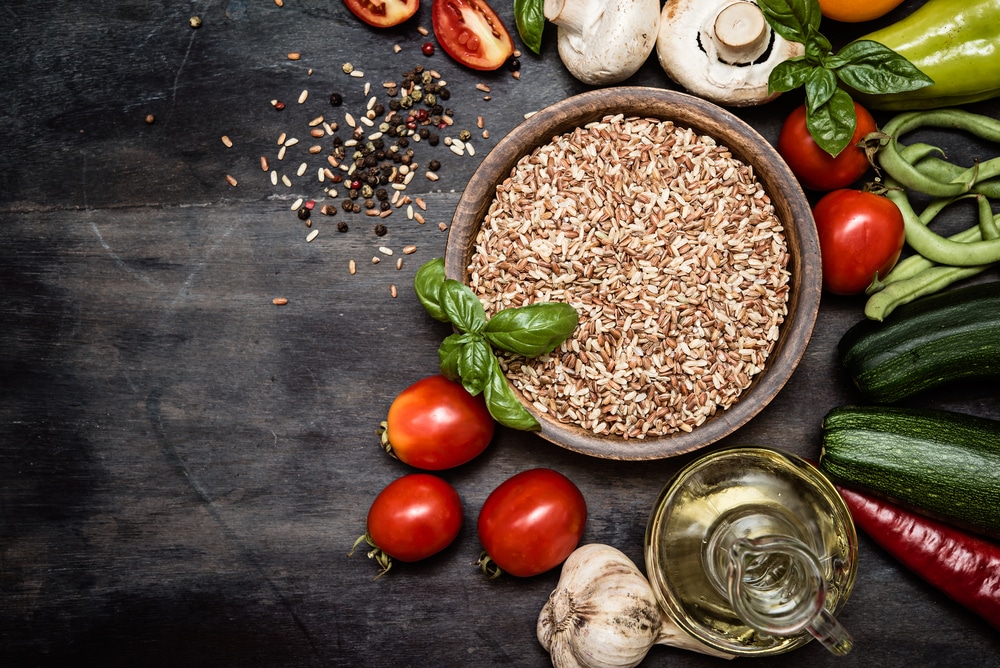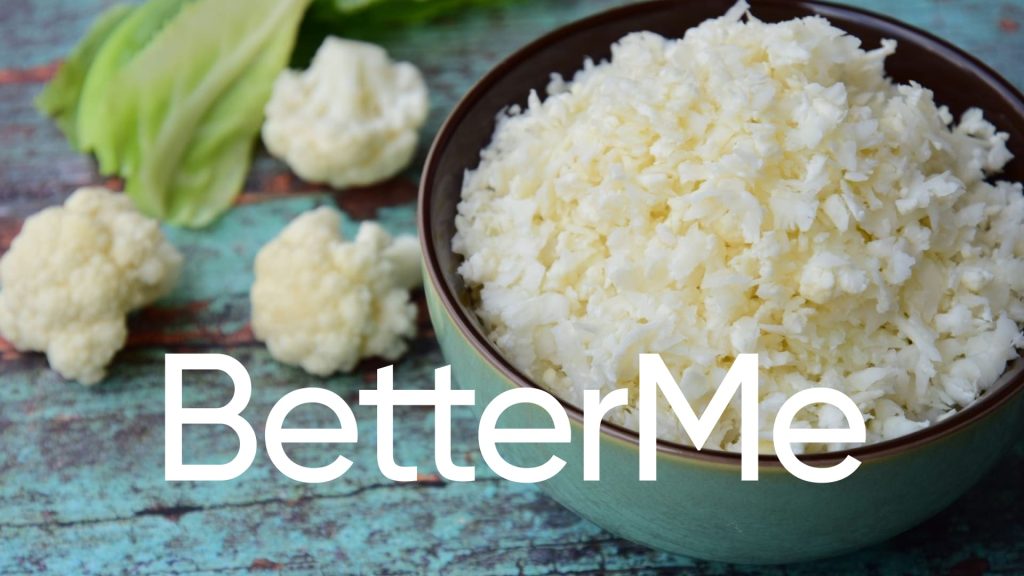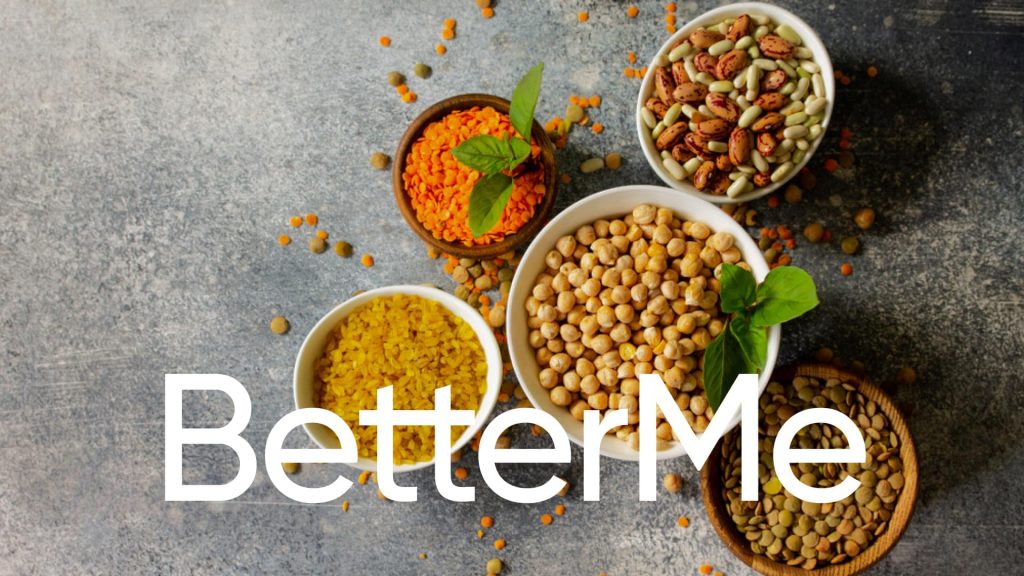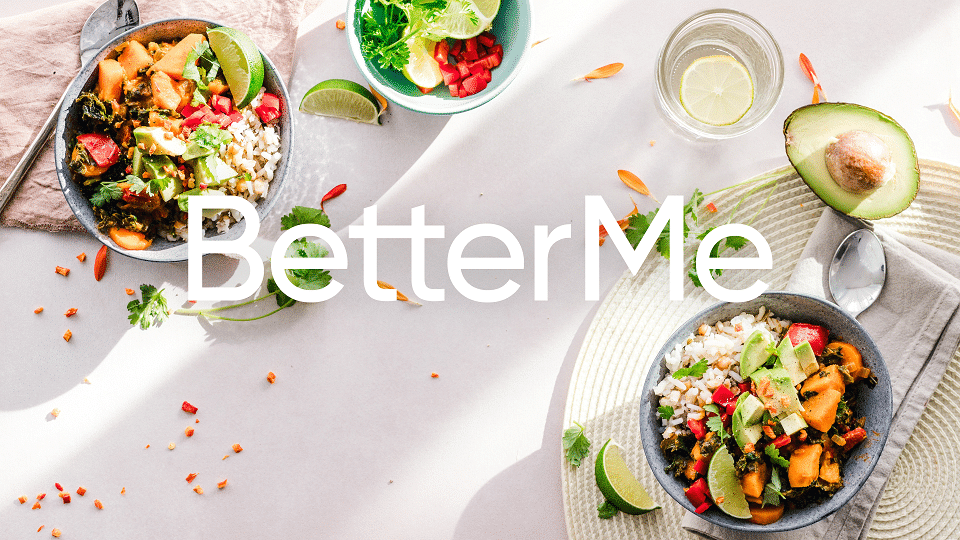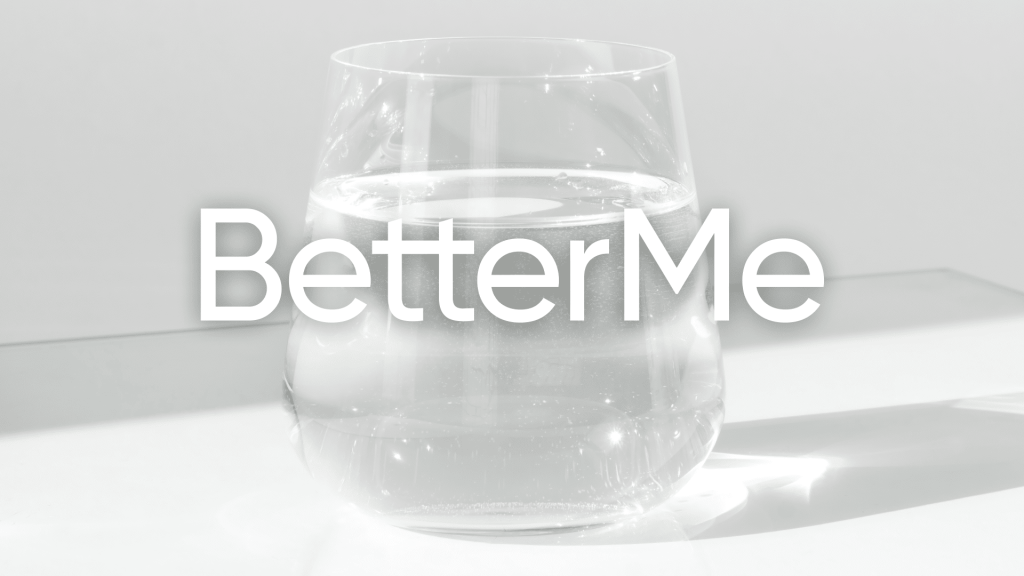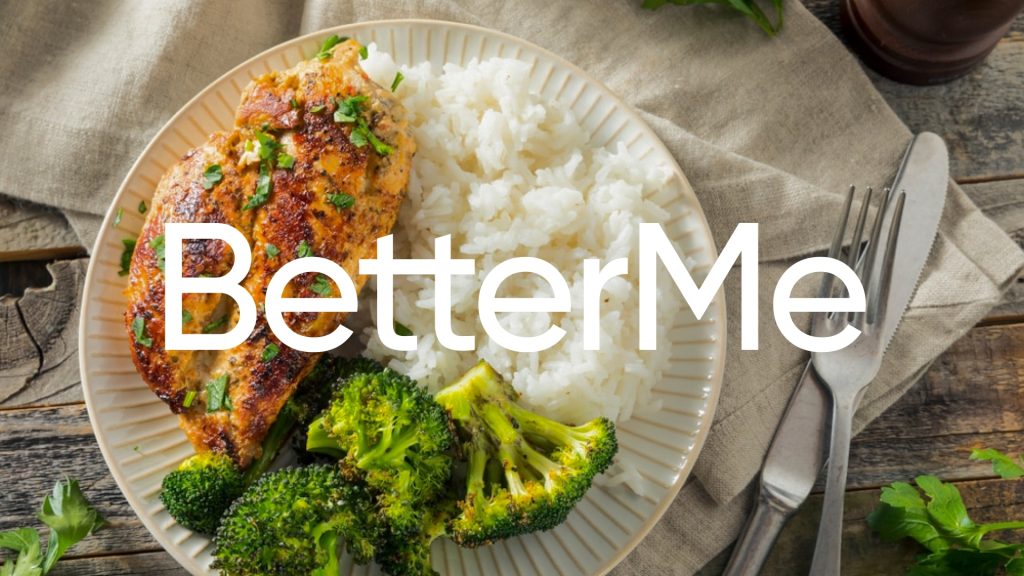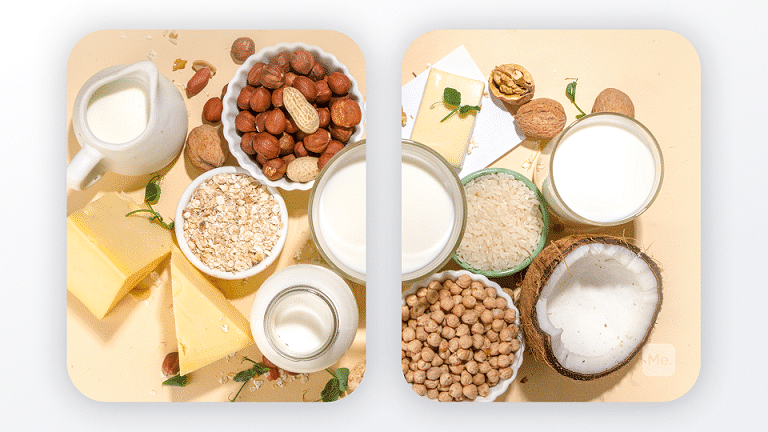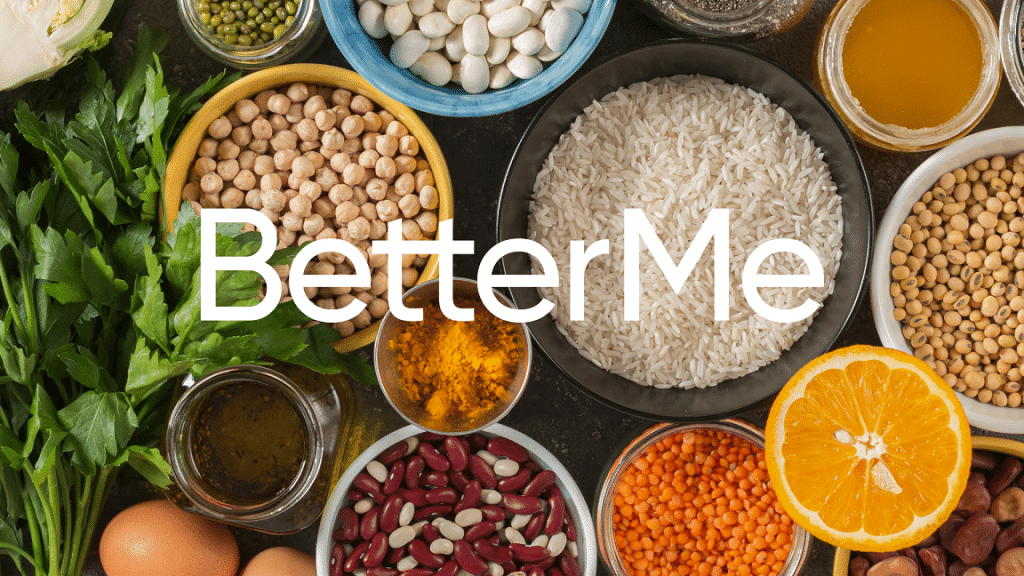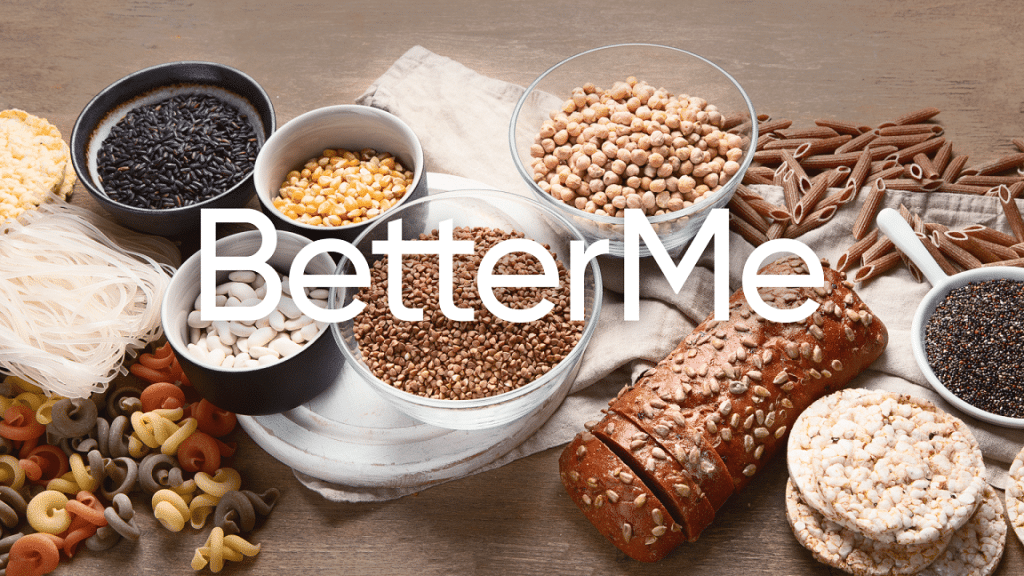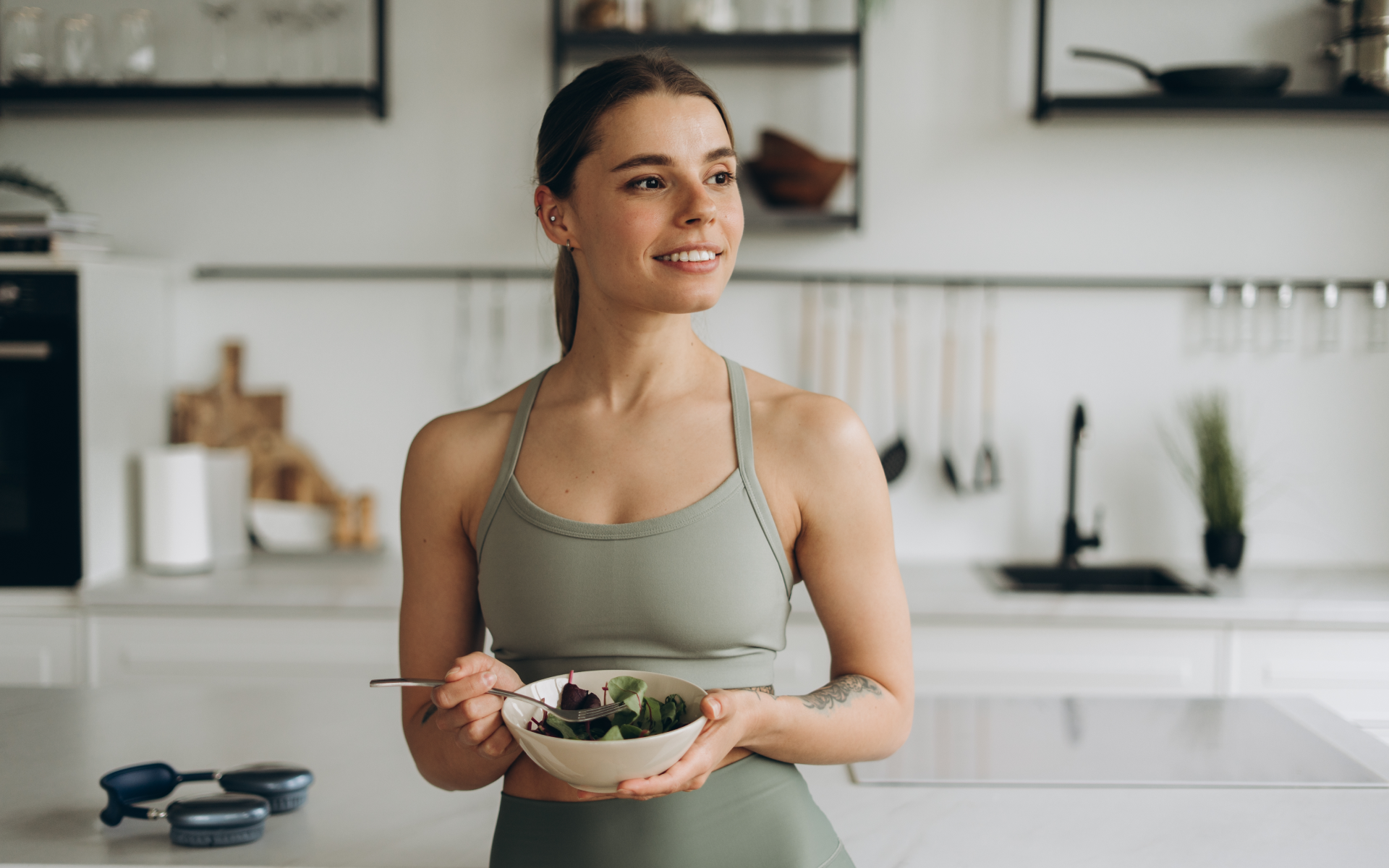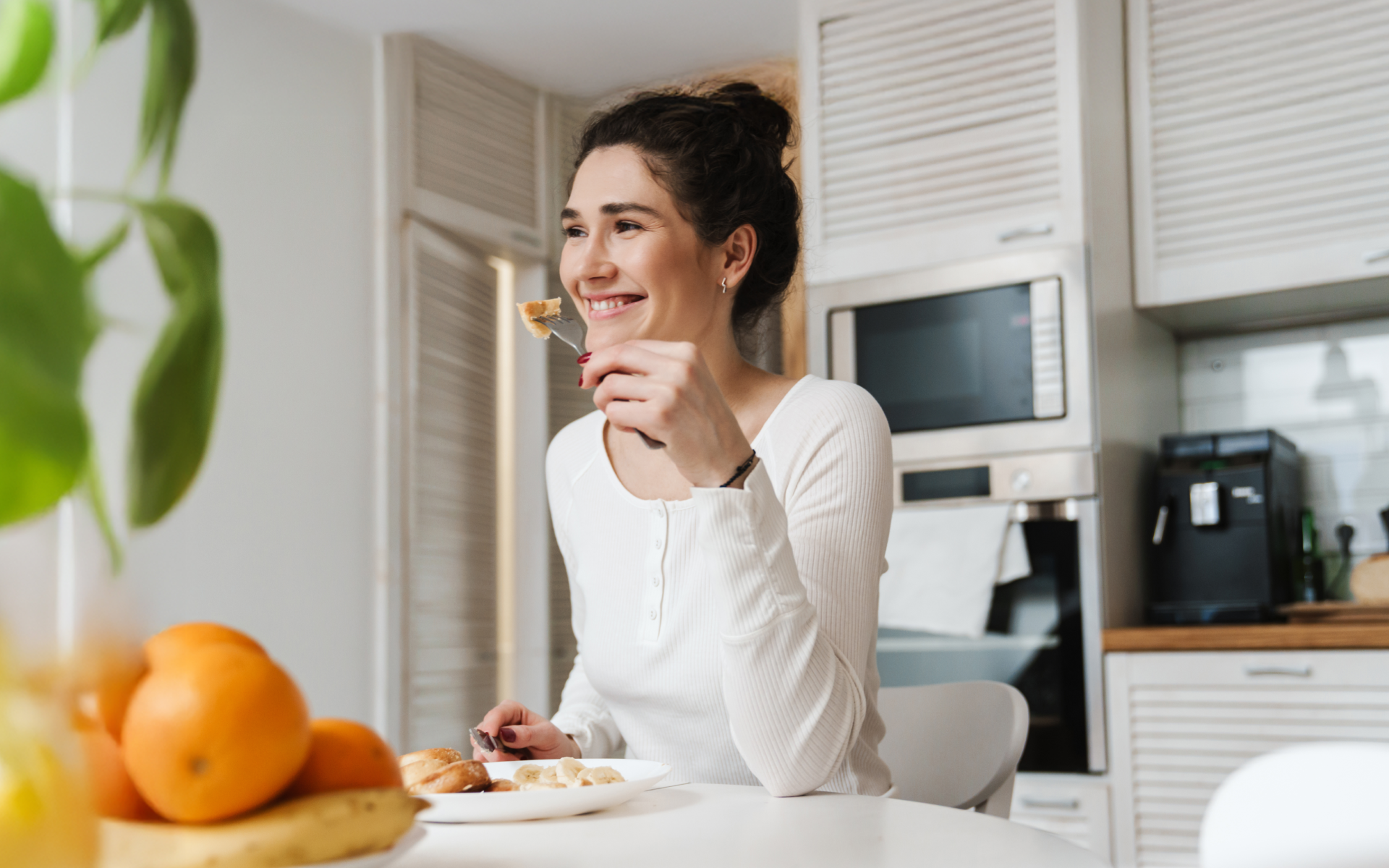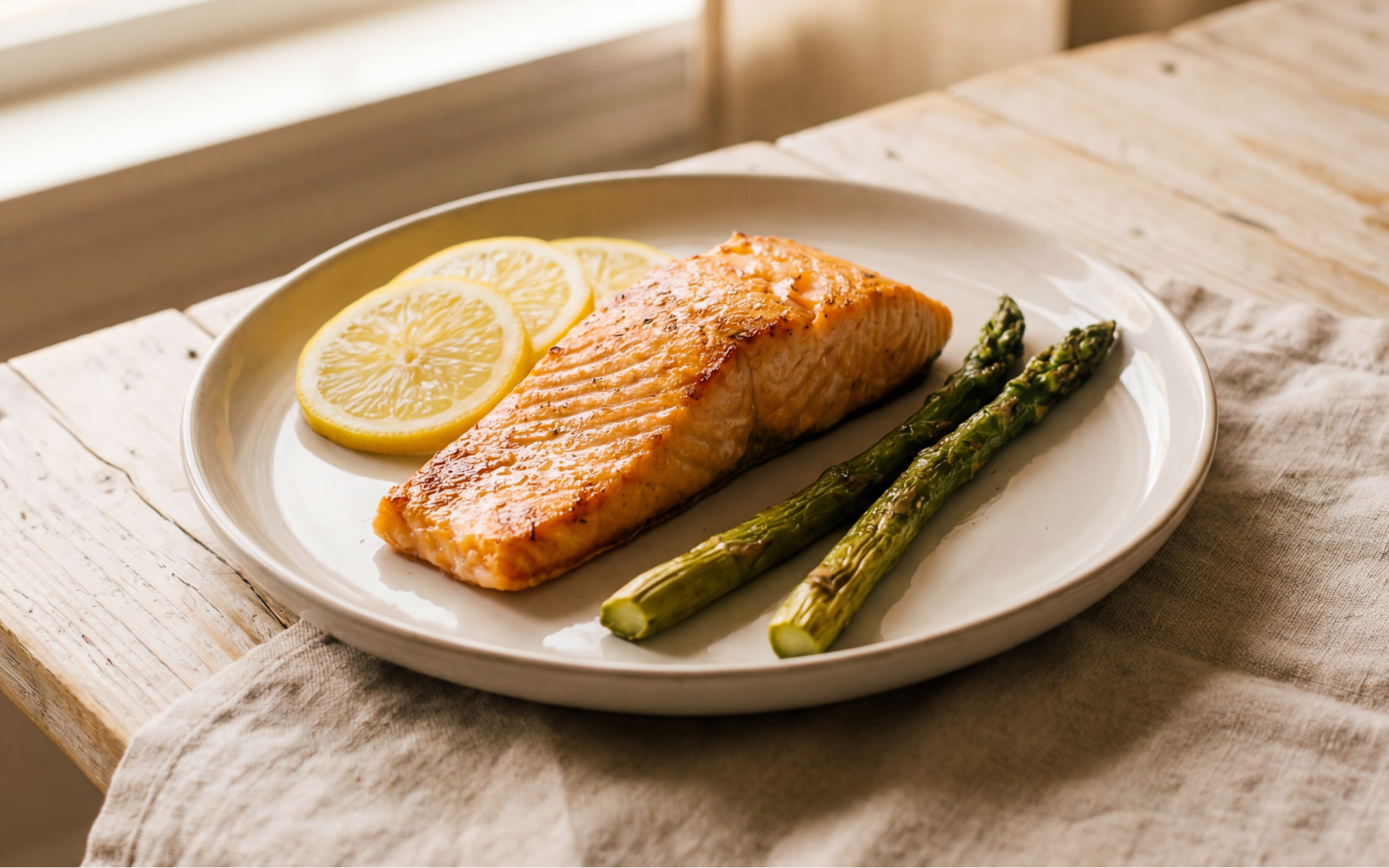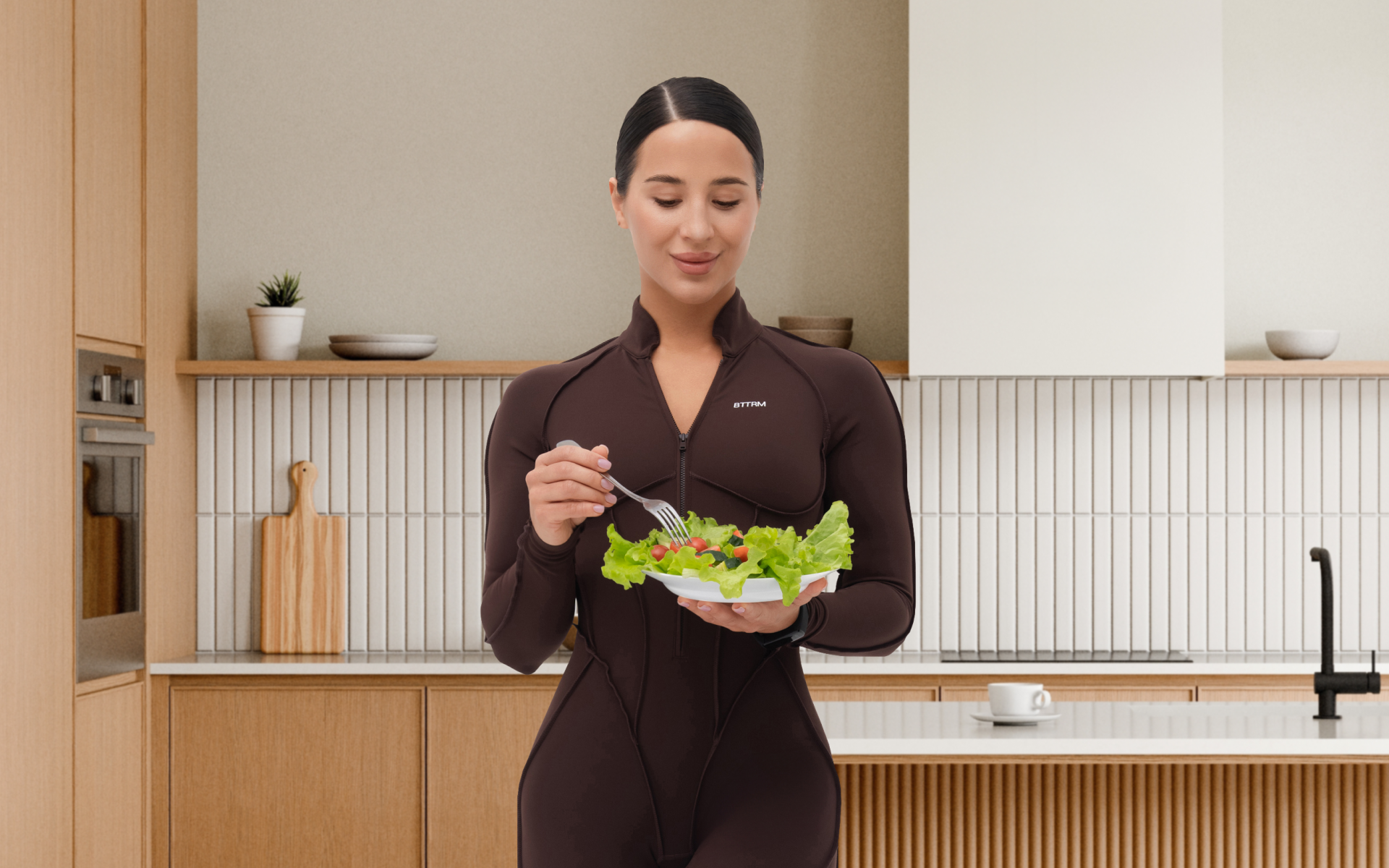What Is The Brown Rice Diet?
What have you heard about brown rice? Most people know that it is a healthier option to white refined rice. That is 100% true, but how healthy is it and how good is brown rice for a diet? Find out this and much more in this piece about the brown rice diet.
Get your personalized
meal plan!

With more and more people looking for ways to stay healthier and avoid overweight or obesity related problems, several diet plans have come up to ensure that people are healthy. Brown rice diet is one such eating plan that has been embraced by many, some just following without understanding how it works. A study published in the Journal of Food Science and Nutrition established that antioxidants in brown rice might be the reason behind the low prevalence of specific chronic illnesses in parts of the world where rice is the staple food (22). Here is everything you need to know about this healthy foodstuff.
Also known as brown rice cleanse, the 7 day brown rice diet is founded on the popular 1970s macrobiotic diet principles. Some sources also state that it has Ayurvedic roots. Brown rice is the main component in this eating plan, but not the sole one. While the macrobiotic diet offers a long-term solution, the purpose of the 7 day brown rice diet is to detox your body from processed foods and other stressors such as environmental toxins, hence helping you attain better health balance naturally.
Read More: Different Types Of Diets: The Lowdown On The Most Talked-About Weight Loss Strategies
Why Is Brown Rice Preferred?
Rice is a universal food, eaten by about 70% of people globally. According to Harvard School of Public Health, brown rice is a whole grain made up of the outer grain kernel which contains the endosperm (starchy middle layer), bran (fiber-filled layer), and germ (nutrient-rich core) parts that offer both fiber and starch (31). On the other hand, white rice is highly processed and loses valuable nutrients during the refining process where its hull, bran, and germ are removed. Due to the high fiber content, brown rice has a less dramatic impact on insulin levels and blood sugar compared to white rice.
How To Do The Brown Rice Diet?
Brown rice intends to cleanse your body without starving it. It works by helping you avoid certain substances such as alcohol and sugar but at the same time makes you feel nourished with mouth-watering meals. This whole grain is said by some to help release harmful toxins, allowing the cells of the body to open up and release stored toxins into the bloodstream to be disposed through the urinary tract and bowel movements (5).
BetterMe is your fast-track ticket to a long-lasting weight loss! Tailor your fitness journey and maximize your results with just a couple of swipes!
What To Eat And How To Prepare?
What can I eat during the 7 days of brown rice diet? The Permanent Journal, breaks down the eating plan as follows (26):
- 40% to 60%- Brown rice
- 20 to 30% – Vegetables
- 10%- Beans
- Remaining %- Occasional fruits or sea vegetables
Proponents of the brown rice diet believe that chronic diseases such as cancer are caused by eating too much unhealthy, processed foods, and less of whole foods. Therefore, they advocate for whole foods such as:
-
Brown Rice
Prepare by rinsing it in cold water until it runs clear. This will help remove dust and excess starch. Some people prefer soaking rice to reduce stickiness and cooking time. For every cup of the rice, boil 2 to 2¼ cups of water. When the water boils, add the rice and stir, then reduce heat for 45-60 minutes, or less depending on the type of rice. Cover the pot and do not stir while cooking. When you remove the cooked rice from heat, let it steam in the covered pot for 10 minutes. If desired, add the onions, herbs and spices during the last 15- 20 minutes of cooking (20).
-
Fruits
All types of whole fruits are allowed apart from the ones listed in the avoid list. Eat the fruits raw after thoroughly washing them. It is recommended that you eat fruits 30 minutes before the main meal or 2 hours after.
-
Condiments
Herbs and spices should not contain salt or MSG. Opt for fresh garlic and ginger, cayenne pepper, etc.
-
Nuts And Seeds
Such as pumpkin, sesame flax, sunflower, and walnuts.
-
Some Healthy Fats
Such as olive oil and flaxseed oil. Note that flaxseed oil must be refrigerated and used within three weeks after opening it. It should never be heated.
-
Vegetables
Including sea veggies such as seaweed, kelp, and nori. Wash the veggies and eat them raw, baked or steamed. You can mix them with the rice.
Read More: Are Carrots Keto? Vegetables That Will Knock You Out Of Ketosis
-
Springwater And Drinks
Such as herbal teas, freshly made vegetable and fruit juices – preferably freshly made. Dilute juices half with water. Drink these liquids 30 minutes before or 1 hour after eating because they dilute the enzymes in the stomach needed in digestion.
Other foods that you can take include eggs, free-range chicken, tofu, wild fish, legumes such as chickpeas and lentils, beans, rice cakes, almonds, hummus, and tempeh. You can consume butter in moderation.
Foods To Avoid
Do not consume:
- Alcohol, coffee, and caffeinated beverages
- Corn and mushrooms
- Dairy products such as milk, sour cream, fruit bottom yogurt, and cheese
- Frozen, canned or jarred vegetables
- Margarine
- Oranges, orange juice, bananas, and dried fruit
- Peanuts
- Processed foods
- Shellfish, pork, red meat, or catfish
- Sugar and products containing sugar and artificial sweeteners
- Wheat products such as bread, cakes, pasta, pastries, crackers, and cookies
The quality of what you eat matters. If possible, consume only organic foods.
Example Of Brown Rice Diet Meal Plan
According to DETOX.org, brown rice diet is a detox and weight loss plan which permits brown rice as the only starch to be eaten. Fresh fruits and vegetables can be consumed. Here is an example of what you can eat in a day (5):
According to DETOX.org, brown rice diet is a detox and weight loss plan which permits brown rice as the only starch to be eaten. Fresh fruits and vegetables can be consumed. Here is an example of what you can eat in a day (5):
Breakfast:
- Begin the day with 1 glass of warm lemon water. Prepare this by squeezing ½ a lemon in 12 ounces of boiling water and some cold water to make it drinkable. Alternatively, you can let the hot mixture cool until lukewarm before drinking. This will kick-start your hydration for the day, provide some Vitamin C, and wake up your GI tract.
- After 30 minutes, take a cup of any raw fruit, then wait for another half-an-hour before taking 1 cup of steamed whole grain brown rice with herbal tea.
Lunch:
You can eat:
- 1 cup of green, leafy steamed vegetables.
- 1 cup of other raw veggies such as tomatoes and snow peas.
- 4 oz. cooked beans or steamed tofu, flavored with 2 teaspoons of tahini.
Dinner:
You can eat:
- As much raw vegetable salad as you want.
- 1 cup of cooked veggies.
- 1 cup of brown rice, and herbal tea.
Other Ways To Enjoy Brown Rice
Brown rice can be taken at any time of the day by adding it to any healthy meal. Other than following the 7 day brown rice diet, you can enjoy brown rice by:
- Topping with eggs, avocado, salsa, and black beans for breakfast.
- Instead of oatmeal, take brown rice porridge for breakfast.
- Combining it with vegetables and protein for lunch.
- Making burgers together with black beans for lunch or dinner.
- Using it to make stir-fries and energy bars.
- Using it in place of white pasta when making soup and curry.
- Combining it with fresh vegetables and olive oil to make a tasty side dish.
- Making pudding, sushi rolls, and risotto.
Is Brown Rice Good For Diet?
How good is brown rice for diet? Brown rice is made as per macrobiotic principles, therefore provides adequate calories, protein, fat, and most vitamins and minerals to keep you healthy. Brown rice and vegetables diet is a healthy meal recommended by experts.
If you’ve mustered up the courage to crush your weight loss goal, let Betterme take the sting out of this demanding process. Our app will help you restructure your habits, remold your life and crank up your fitness results!
Brown Rice Nutritional Facts
The U.S. Food and Drug Administration, responsible for regulating food labeling through the Nutrition Labeling and Education Act, gives the following breakdown of nutrient composition in 1 serving of 100 grams of rice, brown, long-grain, cooked (22):
- Carbohydrate, by difference- 25.58g
- Calcium- 3 mg
- Cholesterol- 4 mg
- Copper- 0.106mg
- Energy- 123 kcal
- Fatty acids, total saturated- 0.26g
- Fatty acids, total monounsaturated- 0.369g
- Fatty acids, total polyunsaturated- 0.366g
- Fiber, total dietary- 1.6g
- Folate, total- 9 µg
- Iron- 0.56mg
- Magnesium- 39mg
- Manganese- 0.794mg
- Niacin- 2.561mg
- Pantothenic acid- 0.38mg
- Phosphorus 103mg
- Protein- 2.74 g
- Potassium- 86mg
- Riboflavin- 0.069mg
- Selenium- 5.8 µg
- Sodium- 4mg
- Sucrose- 0.24g
- Sugars, total including NLEA- 0.24g
- Starch- 24.79g
- Thiamin- 0.178mg
- Total lipid (fat)- 0.97 g
- Vitamin B-6- 0.123mg
- Vitamin E (alpha-tocopherol) -0.17mg
- Vitamin K (phylloquinone)- 0.2µg
- Water- 70.27g
- Zinc- 0.71 mg
Benefits Of Brown Rice Diet
Being a whole grain, consuming brown rice has the following advantages (30):
- The bran supplies antioxidants, B vitamins, copper, iron, magnesium, phytochemicals, and zinc. Being fiber-rich, the bran slows the breakdown of starch into glucose, preventing sharp spikes, thus maintaining steady blood sugar.
- Whole-grain consumption may reduce coronary heart disease risk(31). The fiber, magnesium, and lignans in brown rice positively contribute to heart health. Also, components like gamma-oryzanol in the bran may enhance heart health by simultaneously lowering bad cholesterol and increasing good cholesterol. They are also said to reduce the risk of strokes and cancer (12). Fiber in bran also aids in waste movement in the digestive system for detoxification.
- The germ is rich in antioxidants, B vitamins, healthy fats, vitamin E, and phytochemicals.
- The endosperm has protein, carbohydrates, and small amounts of some B vitamins and minerals.
- According to a study published in the Food Chemistry journal, brown rice has antioxidants Phenols and flavonoids (18). These nutrients help protect you from oxidative stress that may lead to premature aging, certain cancers, and heart diseases (17).
- Antioxidants in brown rice may help prevent cell injury that is caused by free radicals, reducing inflammation (11).
- Hypoallergenic, therefore, allows tolerance without adverse symptoms. Also, its protein offers an excellent alternative for vegans, people who are lactose intolerant, or those who prefer plant-based protein sources (25).
- A study published in PLOS One established that a brown rice based vegan diet enhances glycemic control and hemoglobin A1c (HbA1c) levels in people with diabetes (8).
- It contains selenium which is involved in regulating the thyroid gland and strengthening the immune system, lowering the risk of several illnesses.
- It contains energy-restoring nutrients such as B-vitamins, iron, and magnesium.
- According to a review in the Journal of Trace Elements in Medicine and biology, manganese, which is found in brown rice, helps in wound healing, bone development, nerve function, muscle contraction metabolism, and blood sugar regulation (23).
- Brown rice is naturally gluten-free, therefore, safe for people with intolerance or allergic to gluten. Also, individuals with specific autoimmune illnesses may benefit from a gluten-free diet (27).
Disadvantages Of Brown Rice Diet
The disadvantages of brown rice include:
- It takes longer to cook due to the intactness of the fibrous bran layer and nutrient-rich germ.
- It lacks nutrients such as Vitamin D, vitamin B12 and calcium. Following the diet for a week may not lead to nutrient deficiency, but a longer period may require you to get the necessary supplements.
- Rice contains arsenic which may increase the risk of cancer, asthma, diabetes, and other diseases (3). It can also affect a developing baby’s health, therefore should not be consumed excessively especially during pregnancy.
Brown Rice Weight Loss Diet Plan
Is brown rice good for weight loss? Yes, it is. Multiple studies confirm that brown rice on low carb diet is enriched with essential nutrients and is also low in calories, making it the best substitute for white rice when on a weight loss journey (2) (7) (32) (15). Also, consuming brown rice in place of white reduces belly fat (9). Other reasons as to why it is suitable for weight loss are:
- Selenium in brown rice will help boost your immune system as you lose weight.
- Brown rice contains manganese to help you get proteins and essential carbohydrates that are converted into energy to keep you energetic for long (31).
- A low-calorie diet that includes brown rice burns extra fats compared to refined rice, according to the American Journal of Clinical Nutrition (24).
- It is rich in iron, potassium, vitamins and other essential nutrients that are not fattening but may make you feel full.
- The fiber in brown rice makes it easy to digest, cleanses the body, and eases bowel movements. This makes a strong digestive system that will help you maintain a healthy body weight.
- A study published in the British Journal of Nutrition established that switching to brown rice may help get rid of the dangerous visceral fat in your abdomen (10). Lignans contained in this whole-grain lower the fat concentration in blood, and minimize blood pressure.
Note:
- Instead of 3 meals, you can have 4 to 5 small-medium servings throughout the day.
- It is recommended that you chew your food at least twice as much as usual.
- You can take a cup or 2 of green tea in the morning unless you want to be off caffeine completely.
- It is important to get enough rest. Sleep for enough hours. Meditation, gentle yoga, and walks are also recommended to improve your blood circulation and make you relax.
- Do not take liquids during mealtime. This will dilute your digestive enzymes.
- Avoid supplements and OTC drugs if you can. However, prescription medicine should be taken as usual.
You may feel fatigued and have headaches as you begin the brown rice diet. You may also feel hungrier than normal with cravings. However, you will enjoy better sleep and a clear mind, and by the 5th day, you will have more energy.
FAQs
-
What Can I Expect From A Diet Of Brown Rice And Eggs?
With all the benefits of brown rice above, combining it with eggs results in a healthier meal. Eggs are rich in easily absorbed proteins and fat, therefore the combination leads to a well-balanced meal full of energy that will keep you satiated and craving-free (4).
-
What Can Replace Brown Rice For Gluten Free Diet?
In as much as quinoa is not a grain but a seed, it is a great gluten-free substitute for brown rice. According to The Globe and Mail, other allowable grains include buckwheat groats, millet, amaranth, teff, and wild rice (28).
-
Why Is Brown Rice Not Allowed On Slow Carb Diet?
The slow carb diet by Timothy Ferriss is a low-glycemic eating plan involving the intake of the 5 main groups of food (animal protein, fats, vegetables, legumes, and spices) whereby very-low carb meals are eaten 4 times a day for six days of the week with the intention of increasing the body’s ability to break down fat for energy and reduce overall fat stores.
There is scarce information on why brown rice is not allowed on a slow carb diet, but according to answers on Reddit, the glycemic Index of brown rice is around 55, while that of black beans is (31) (13). For this reason, brown rice may spike insulin levels, while the black beans will release slower and keep your insulin on an even keel, possibly making black beans a healthier alternative (33). Also, amylopectin found in black rice starch is much easier to break down causing higher insulin responses and may lead to insulin resistance if consumed in high quantities for long. Legumes have less amylopectin. Therefore, brown rice is not allowed on this diet.
Conclusion
Brown rice cleanse is a great way to cleanse the body without depriving it of essential nutrients. Now you can hop on the trendy brown rice diet bandwagon fully equipped with all the necessary facts. While the benefits are numerous, pay attention to the cons to avoid health risks. Remember, it is necessary to consult a qualified nutritionist or your general physician before trying any diet, including the brown rice diet.
DISCLAIMER:
This article is intended for general informational purposes only and does not address individual circumstances. It is not a substitute for professional advice or help and should not be relied on to make decisions of any kind. Any action you take upon the information presented in this article is strictly at your own risk and responsibility!
SOURCES:
- 7-Day Brown Rice Diet (2019, livestrong.com)
- 11 Reasons to Consider Brown Rice for Your Weight Loss (2020, vitagene.com)
- Assessment of human dietary exposure to arsenic through rice (2017, sciencedirect.com)
- Brown Rice and Eggs for Breakfast (2017, oureverydaylife.com)
- Brown Rice Diet (n.d., detox.org)
- Brown Rice Diet: A Cellular Cleanse — Osmia Organics (n.d., osmiaorganics.com)
- Brown Rice: Health Benefits & Nutrition Facts (2018, livescience.com)
- Effect of a Brown Rice Based Vegan Diet and Conventional Diabetic Diet on Glycemic Control of Patients with Type 2 Diabetes: A 12-Week Randomized Clinical Trial (2016, journals.plos.org)
- Effect of Brown Rice Consumption on Inflammatory Marker and Cardiovascular Risk Factors among Overweight and Obese Non-menopausal Female Adults (2014, ncbi.nlm.nih.gov)
- Effects of the brown rice diet on visceral obesity and endothelial function: the BRAVO study (2014, cambridge.org)
- Flavonoids, Inflammation and Immune System (2016, ncbi.nlm.nih.gov)
- Gamma Oryzanol (2014, sciencedirect.com)
- Glycemic Index and Glycemic Load (n.d., diabetes.ucsf.edu)
- Glycemic Index for Black beans (2020, dietandfitnesstoday.com)
- Is Brown Rice Good for You? (2018, healthline.com)
- Nutrient Composition and Anti-inflammatory Potential of a Prescribed Macrobiotic Diet (2015, tandfonline.com)
- Oxidative Stress and Diseases: Clinical Trials and Approaches (2016, ncbi.nlm.nih.gov)
- Phytochemical profiles and antioxidant activity of brown rice varieties (2017, pubmed.ncbi.nlm.nih.gov)
- Redox Homeostasis and Natural Dietary Compounds: Focusing on Antioxidants of Rice (2018, ncbi.nlm.nih.gov)
- Rice (n.d., hsph.harvard.edu)
- Rice antioxidants: phenolic acids, flavonoids, anthocyanins, proanthocyanidins, tocopherols, tocotrienols, γ-oryzanol, and phytic acid (2014, ncbi.nlm.nih.gov)
- Rice, brown, long-grain, cooked (Includes foods for USDA’s Food Distribution Program) (2019, fdc.nal.usda.gov)
- Role of manganese in neurodegenerative diseases (2012, ncbi.nlm.nih.gov)
- Substituting whole grains for refined grains in a 6-wk randomized trial favorably affects energy-balance metrics in healthy men and postmenopausal women (2017, academic.oup.com)
- The benefits of brown rice protein (2014, health24.com)
- The Macrobiotic Diet as Treatment for Cancer: Review of the Evidence. (2002, thepermanentejournal.org)
- Triggers and drivers of autoimmunity: lessons from coeliac disease (2013, ncbi.nlm.nih.gov)
- What are some healthy gluten-free grains, besides brown rice and quinoa? (2014, theglobeandmail.com)
- What Is The Slow-Carb Diet? Everything To Know About The Low-Glycemic Eating Plan (2020, womenshealthmag.com)
- Whole Grains (n.d., hsph.harvard.edu)
- Whole grain consumption and risk of cardiovascular disease, cancer, and all cause and cause specific mortality: systematic review and dose-response meta-analysis of prospective studies (2016, pubmed.ncbi.nlm.nih.gov)
- Why you MUST eat brown rice for weight loss (2018, timesofindia.indiatimes.com)
- Why wouldn’t the 4 Hour Body diet work with brown rice? (2019, reddit.com)
